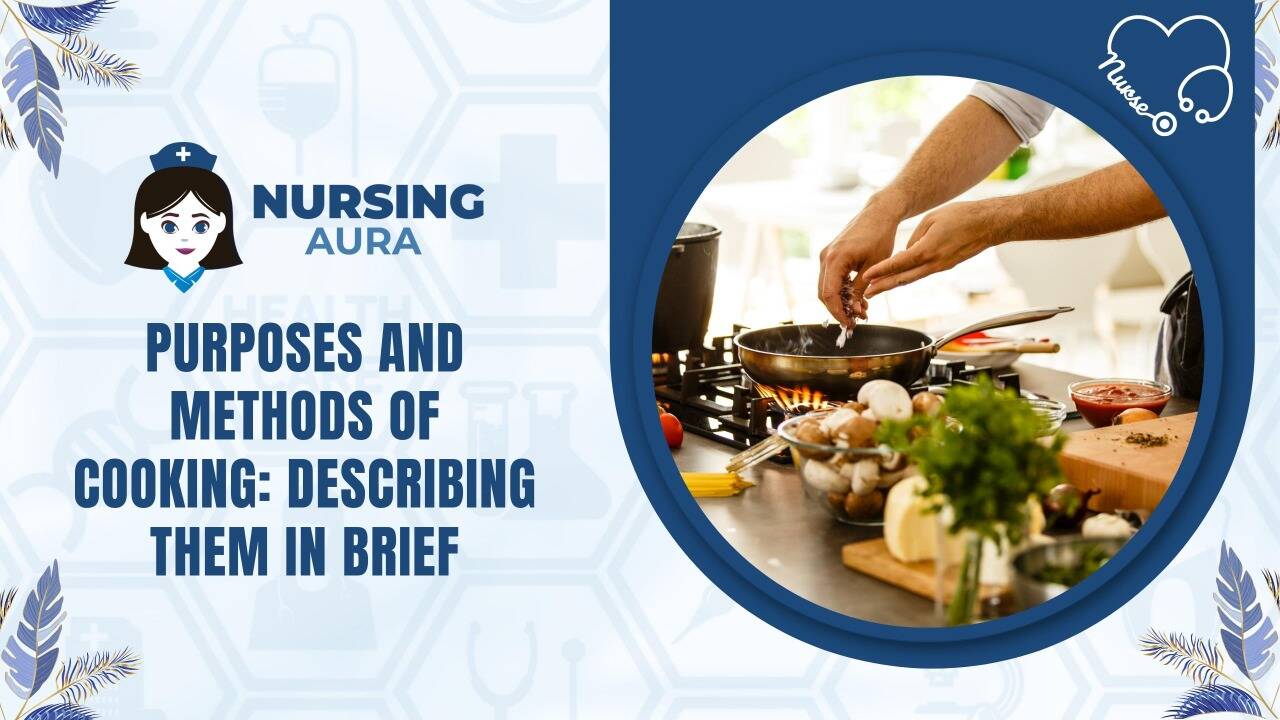Some food variety such as fruits, vegetables and nuts are consumed raw. It is beneficial to consume them in their raw, uncooked state since they retain the majority of their nutritional worth. Regardless, the majority of food types are prepared before to consumption. Cooking is the process of subjecting food variety to the impact of heat and in this article we will discuss about the purposes, methods, and much more about cooking.
Purposes of Cooking
- It enhances the flavor and quality of the cuisine.
- All hazardous germs can be eliminated from food by preparing it at the necessary temperature and time.
- Cooking facilitates appropriate digestion of food.
- Cooking increases the variety and flavor of many foods.
Methods for cooking
There are a number of methods used in cooking. Continue reading this article to know about them in brief.
Heating techniques:
- Boiling
Immersing food sources in water at 100 degrees Celsius and maintaining the water at that temperature until the food is tender constitutes boiling. It requires no particular skills or equipment. It is monotonous.
- Simmering
Simmering is the process of cooking food in a dish with a tight-fitting lid at a temperature between 82° and 99° Celsius. It is a beneficial strategy when food must be cooked over an extended period of time to achieve tenderness. As an illustration, stewing veggies.
- Poaching
This method involves cooking in the smallest amount of liquid at a temperature between 80 and 85 degrees Celsius. Eggs and fish are the foods that are most commonly poached.
- Stewing
This is a delicate method for cooking in a skillet with a tight-fitting lid, using only a small amount of liquid to cover the majority of the food. The liquid is brought to a boil, and then the heat is reduced to maintain a simmering temperature of 98 degrees Celsius. Apples can be cooked using this method.
- Steaming
This approach needs steam cooking of the dish. This is generated by vigorously heating water or liquid in a container so that the food is surrounded by steam and does not come into contact with the liquid. Here, food is made at 100 degrees Celsius.
- Cooking at high pressure
In pressure-cooking, escaping steam is captured and maintained under pressure to raise the temperature of boiling water and steam above 100 degrees Celsius, hence reducing cooking time. Rice, dal, veggies, and meat can all be made in a pressure cooker.
- Dry heat techniques
In this cooking process, either air or fat is used as the cooking mechanism. Air as a cooking method
- Grilling
The process of grilling involves placing the food beneath, above, or in the midst of a highly red-hot surface. This results in browning of the food.
- Broiling or roasting in a pan
When food is prepared covered on heated metal or in a skillet, the method is referred to as roasting. (e.g) preparing chapatis.
- Baking
Here, food is made in the oven using heated air. The majority of the prepared food varieties have a brown, fresh outside and a soft, porous inside. For instance, baked goods and breads. The temperature generally maintained in an oven ranges from 120 to 260 degrees Celsius.
Fat as a cooking medium
- Sautéing
This method requires just enough oil to cover the bottom of the container. The vast majority of foods made by sautéing are utilized as side dishes.
- Shallow frying
In this approach, food is prepared with minimal oil on a tava. For example, chapati, cutlets etc.
- Deep Frying
Food is prepared by total immersion in hot oil. The temperature maintained is between 180 and 220 degrees Celsius. For instance, Samosa, Bajji, etc.
In addition to its texture, the food’s flavor is also enhanced.
Other cooking procedures
Braising
Braising is a cooking method that combines roasting and stewing in an airtight container. The preparation of meat is an example of this technique.
Microwave preparation
The meal absorbs electromagnetic waves from a force source called a magnetron, causing the food to become hot without delay. Microwave cooking increases the quality of food since it cooks quickly with almost no water, preserving the natural colour of fruits and vegetables.
Solar heating
- Plain mirror
- Cooking utensil
- Glass Sheet
- Cover
- Protection material glass
- Outer box
- Handle
- Mirror Support
- Hinge adjuster and guide
- The solar cooker is fueled by solar energy. The sun cooker consists of a highly protected, dark-colored box with at least one or more clear lids. This is done to retain heat within the solar cooker. The temperature maintained is roughly 140 degrees Celsius. The cost of the stove and its maintenance are modest. It takes some investment and unique vessels to be employed.

